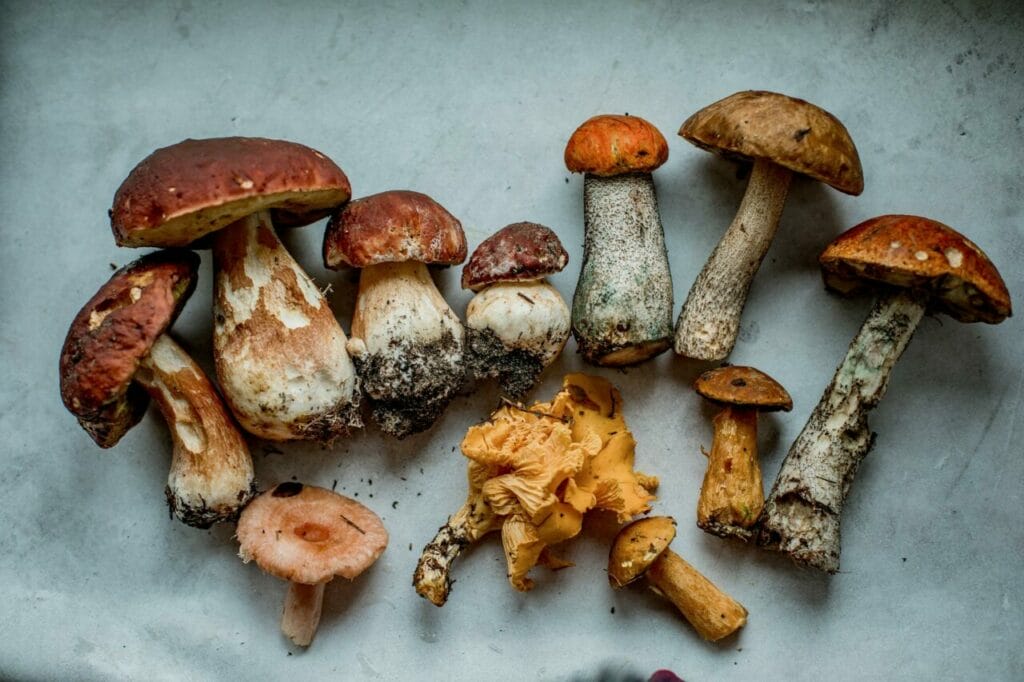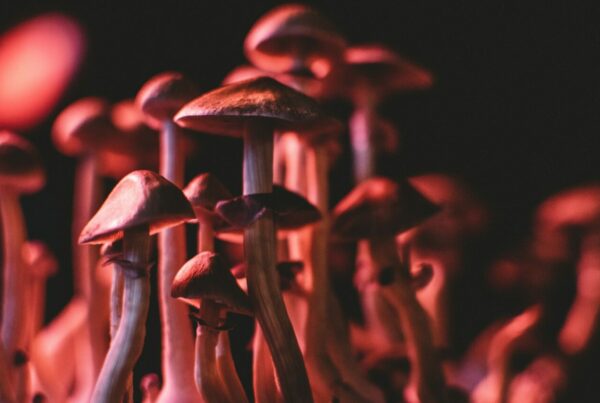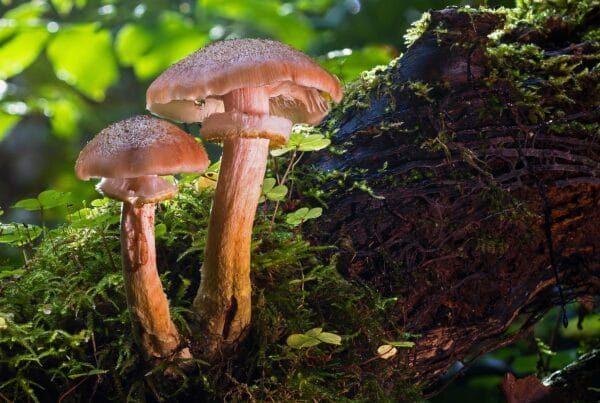Common treatments for anxiety include medication and therapy, but these methods may not be suitable for everyone due to possible side effects. This has led to a growing interest in alternative therapies such as psychedelic therapy, which employs substances like “magic mushrooms Montreal” among others.
Welcome to your premier destination for buying psychedelics online in Canada. We provide swift, secure, and confidential services.
[toc]Key Takeaways:
- Psychedelic therapy combines the therapeutic benefits of psychedelic substances with traditional counseling methods to encourage healing.
- Psychedelic therapy may improve emotional well-being and overall quality of life via spiritual journeys.
- The integration process, a crucial component of psychedelic therapy, is intended to maintain the long-term effectiveness of the therapy session.

Statistics on Anxiety Disorders in Canada
The 2022 Mental Health and Access to Care Survey revealed an alarming increase in the prevalence of anxiety disorders in Canada. The proportion of Canadians aged 15 and older diagnosed with generalized anxiety disorder in the year preceding the survey rose from 2.6% in 2012 to 5.2% in 2022.
Contrasting Traditional Treatment and Psychedelic Therapy
Standard treatments for anxiety disorders typically comprise a combination of psychotherapy and medication. Psychotherapy, also known as mental health counseling, is a collaborative process between a therapist and the patient to mitigate anxiety symptoms.
On the other hand, anxiety medications work to relieve symptoms by tailoring the treatment to the specific anxiety disorder and considering any co-existing mental or physical health problems. While treatments can differ based on individual needs, psychotherapy and medication remain the core approaches.
In psychedelic therapy, sessions are unique as they involve one or two doses of a psychedelic substance, coupled with other therapeutic techniques.
The Role of Psychedelics in Therapy
Psychedelic therapy involves the use of psychedelic substances to enhance therapeutic healing. These substances, known for their hallucinogenic properties, have been integral to holistic medicine and spiritual rituals in diverse cultures for centuries.
The most frequently used substances in such therapeutic practices are Lysergic acid diethylamide (LSD) and psilocybin. LSD triggers variations in mood, perception, and consciousness. Psilocybin, as mentioned on the Health Canada website, is the active ingredient in magic mushrooms. Consuming these mushrooms can induce sensory perceptions like visual, auditory, or tactile hallucinations.
Determining Dosage for Three Sessions
In psychedelic therapy, specialists assess patients to determine the appropriate dosage of psilocybin for each session. The dosage can range from moderate to high, depending on the individual’s tolerance level. The typical treatment plan includes one to three sessions, each lasting six to eight hours, with a gap of several weeks in between. This method is distinct from traditional medications, which are usually taken daily until a healthcare professional advises otherwise.
A Journey of Spiritual Transformation
Unlike conventional anxiety medications, which aim to control symptoms, psychedelic therapy can stimulate profound visions and feelings of divine connection, addressing the root causes of the condition. This form of therapy can significantly impact emotional wellbeing and quality of life.
The immersive experiences often result in profound insights, heightened self-awareness, and enhanced emotional processing. These outcomes can encourage personal development, inspire positive behavioural changes, and elevate overall mental health.
Impacts
| Consciousness Expansion | Altered states of consciousness provide a new lens to view the world. | This heightened awareness often leads to:In-depth insightsEpiphaniesIncreased understanding of oneself and the surrounding world |
| Emotional Healing | Supports emotional healing by offering an opportunity to face and process unresolved trauma, grief, or emotional distress. | This process can assist in:Unpacking deeply rooted emotionsReleasing emotional blockagesPromoting emotional wellness |
| Enhanced Self-Awareness | Increases connectivity among sensory brain regions while reducing connectivity within the default mode network. This network integrates various brain regions that interact with each other, focusing on self-referential thinking and subjective self-perception.” | These regions are tasked to: Change negative patterns of thought, beliefs, and routine behaviours. Facilitate users in gaining profound insights into their genuine selves, their motivations, and their interactions with others. |
Somatic Therapy
Somatic therapy, though not commonly linked with psychedelic therapy, is garnering interest due to its potential benefits. This body-centric technique delves into the connection between the mind and body. It’s based on the concept that past traumas can cause sensations to be trapped within the body. Somatic therapists help individuals identify these bodily sensations and use therapeutic methods to alleviate this tension.
Integration
This offers a framework for clients to gain understanding, acquire perspective, and extract wisdom from their psychedelic experiences. The transformation occurs during integration sessions between the therapist and client, and through the client’s active engagement outside of psychedelic explorations. Integration enhances the transformative impact of psychedelics through active engagement with unearthed insights and emotional discoveries.
Types of Integration
- Journaling. Documenting experiences helps individuals solidify memories for easier recall in the future. It also enables clients to examine their experiences from multiple perspectives to reveal varying interpretations, meanings, and connections.
- Art. This provides an effective way to capture the complex emotions and feelings from a psychedelic journey in a creative and visually expressive manner.
- Nature-based Practices. These can be as simple as taking mindful walks in the woods or finding peace near a calm body of water. Therapists can help clients identify intricate patterns in nature or suggest the use of natural elements like plants, stones, water, and candles as grounding aids.
- Participation in Integration Groups. Group sessions with individuals who have had similar experiences offer a significant platform for reflection, support, and connection. The ability of psychedelic therapy to spark a sense of interconnectivity and shared understanding beyond individual limits lies at its heart.
The Role of These Techniques in Treating Anxiety
The fundamental pharmacological principle behind all psychedelics lies in their ability to act as agonists, or activators, of serotonin (5-HT) 2A receptors. receptor. Psychedelic research often delves into their influence on the brain’s default mode network. This network is notably linked with continuous thoughts and associated with conditions like depression and anxiety disorders. The treatment can significantly reduce anxiety levels, and these effects can last up to 12 months after treatment.
After a session involving psilocybin, which often includes intense spiritual experiences, patients engage in conversation with their therapist. During these talk-therapy sessions, trained healthcare professionals strive to listen attentively to the patient. They also employ specific practices and techniques to enhance the positive effects of the treatment.
All these methods work together to help individuals with anxiety attain long-lasting relief in fewer sessions compared to conventional treatments.
Transform Your World, One Session at a Time
Many people rely on traditional treatments for anxiety, but not everyone finds these effective or satisfying. Psychedelic therapy offers an alternative, using unique methods that can trigger transformative experiences. These techniques work together to yield significant, lasting results—sometimes for up to a year after just one to three sessions.
Beyond improving mental health, this therapy could also result in considerable cost savings for patients. Interested in exploring a new path to wellness? Discover the potential of psychedelic therapy with Magic Mushrooms Edmonton Canada.
Frequently Asked Questions
Is there a specific type of magic mushroom used for psychedelic therapy?
In studies related to psychedelic-assisted therapy, it’s common to overlook the specification of the mushroom type used. Generally, Psilocybe cubensis is the mushroom of choice.
Online magic mushroom dispensaries cater to different preferences by offering various strains. You have the freedom to choose any strain to experience the therapeutic effects of psychedelics. However, it is essential to exercise caution and choose a reliable vendor to avoid unsafe magic mushrooms from dubious sources.
How long does psychedelic therapy last?
The duration of psychedelic therapy can vary as it involves several stages. A single session in which the psychedelic is consumed lasts between 4 to 8 hours. The entire therapy process, which includes preparation, the session itself, and follow-up discussions, can span a few weeks to several months.
As for long-term effects, individuals often report improvements in their mental health for several months or even up to a After just one or a few sessions, a year has passed.
Included are a few sessions.
Does a therapist provide guidance to the patient during a spiritual journey?
At this stage, patients may receive guidance from professionals such as therapists or other staff. Studies show that Spiritual Health Practitioners (SHPs) offer unique and valuable insights to enhance wellness and facilitate progress during a spiritual journey. Some people seek assistance from an SHP, while others rely on a therapist or specialist available to them.
Does the process of psychedelic therapy incorporate the “set and setting”?
Indeed, both the individual’s mindset (set) and the surrounding environment (setting) play vital roles in safely facilitating spiritual experiences during a psychedelic therapy session. The person’s mental state influences their spiritual journey, affecting their experience both before and during the psychedelic session. The direction and depth of the experience are shaped by various factors, such as beliefs, expectations, emotional states, and intentions.
Main Reference: Psychedelics as Emerging Treatments for Anxiety Disorders: Opportunities and Challenges in a Budding Field – PMC (nih.gov)
About the Authors:
Franklin King, IV, MD. and Rebecca Hammond, M.D.
Related Articles:





